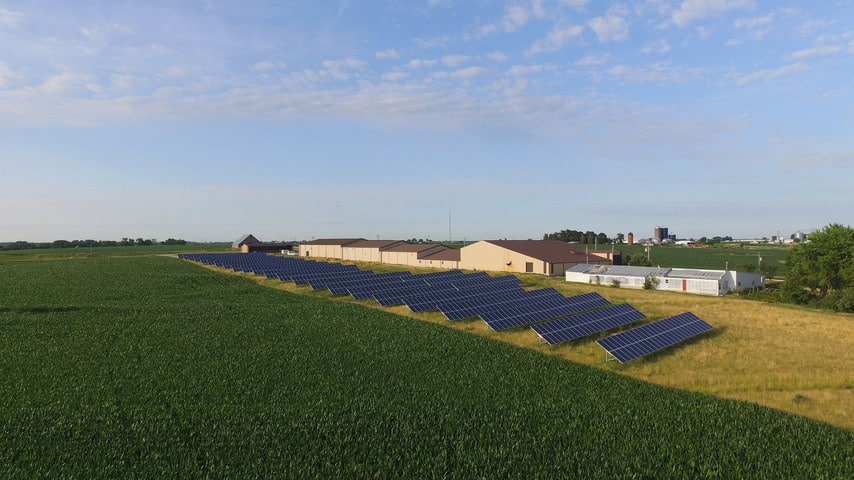Recent changes to net-metering rules in Iowa are threatening to slow the state’s budding solar industry to a snail’s crawl.
In response to a July 2016 request from the Iowa Utilities Board (IUB), Interstate Power and Light Company (IPL) – a subsidiary of Alliant Energy and one of Iowa’s two major electric utility providers – proposed changes to its net-metering policies that would allow the utility to cap the amount of eligible energy to a percentage of the customer’s use over the previous year- significantly reducing incentives to install solar systems.
In a move that caused consternation to the rule’s critics, the board accepted IPL’s decision to base its net-metering tariffs on kW instead of kWh, meaning capacity instead of actual energy use. People who submitted comments when the rule was in its proposal stage said that “IPL’s method was confusing, not transparent, and not consistent with the general understanding of net-metering programs across the country,” according to the board’s order. Commenters also said that IPL’s rule would not encourage the development of renewable energy, which the board said initially was its goal.
The rule is anticipated to go into effect on April 1 and last three years. At the end of three years, the pilot programs will be evaluated by the board to evaluate success and to determine if any adjustments need to be made.
According to a press release by Iowa solar installer Ideal Energy, typical small business and residential customers could see reductions in eligible energy from 30% to 40%, although some estimates put the number closer to 70%.
Under current net-metering rules, net-metering incentives are based on the total energy use during the immediately preceding year. The new rules will cap the percentage of energy eligible for net metering at a percentage of the electricity used in the year prior to the installation of the solar system.
In July 2016, the IUB asked for net-metering pilot projects from the utilities “for the purpose of expanding renewable distributed generation (DG) in Iowa.”
Channing Congdon, director of design at Ideal Energy, said he estimates that new residential and small commercial customers installing solar will drop more than 70% in IPL’s Iowa service territory.
“You typically only want to install what you can net meter,” Congdon said. “This reduction in system size and the fixed costs associated with each solar project will effectively end residential-solar installations for (IPL).”
IPL services over 488,000 electrical customers across Iowa.
Update: This article was updated at 2:01 pm EST on 2/17/17 to provide additional details on the Iowa Utilities Board’s decision.
This content is protected by copyright and may not be reused. If you want to cooperate with us and would like to reuse some of our content, please contact: editors@pv-magazine.com.








By submitting this form you agree to pv magazine using your data for the purposes of publishing your comment.
Your personal data will only be disclosed or otherwise transmitted to third parties for the purposes of spam filtering or if this is necessary for technical maintenance of the website. Any other transfer to third parties will not take place unless this is justified on the basis of applicable data protection regulations or if pv magazine is legally obliged to do so.
You may revoke this consent at any time with effect for the future, in which case your personal data will be deleted immediately. Otherwise, your data will be deleted if pv magazine has processed your request or the purpose of data storage is fulfilled.
Further information on data privacy can be found in our Data Protection Policy.